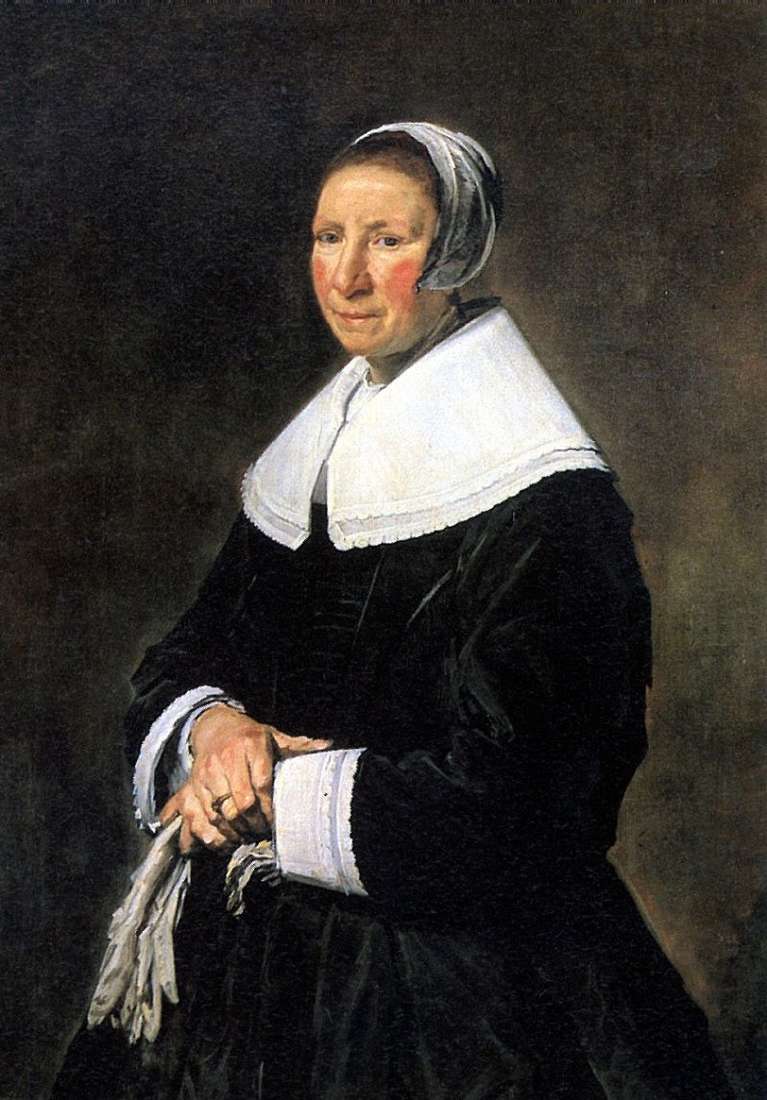
Frans Hals was one of the most famous painters of the Dutch Golden Age. The master of the portrait genre created more than 900 works, in which he introduced children, poor men and aristocrats, guardsmen and drinking companions from various zucchini. “Portrait of a man” refers to a series of portraits similar in style to the model: it is represented half-turned on a dark background, out of which bright face and elements of the wardrobe – gloves, white collar – act as bright contrast spots. Perhaps the man portrayed in the portrait is an officer, this is hinted at by his right hand, lying on the spot where the sword hilt is usually located. Huls works in a new free manner with a broad, tangible stroke that models the shape well. Two centuries later, the innovative painting style of Huls will inspire a whole union of Impressionist artists.
One of the best works of Khals – the Hermitage “Male Portrait” – refers to the late period of the painter’s work. A middle-aged man is wrapped in a broad black cloak. He sits, dashing his arms akimbo, and looks down, and even somewhat contemptuously. A skeptical smile plays on his lips, his eyes are slightly screwed up. The viewer clearly understands that before him is a person whose worldview is colored by skepticism and pessimism.
In the later portraits of Khals, the master of laughter and smile, gay fervor and cheerfulness disappear. Obviously, the changes that have occurred in the artist’s work reflect real changes in the social life of contemporary society.
The picturesque manner of Khals in the early 1650s finds unprecedented strength and breadth. The smear becomes bold and energetic, and the characterization of the image is extremely acute and expressive. “Man’s portrait” is a brilliant confirmation of these qualities. One has only to regret that in his present form he does not disclose to the end the design of Khals. Apparently, to please the tastes of the XVIII century, someone else’s hand recorded a hat with a pompon on it, which gave the image of the image almost grotesque character. The outlines of the hat are easily traced under the recording. In addition, in England, in the British Museum, a copy of the portrait, made before its distortion, and perhaps in connection with this, is kept. On it, a man is depicted in a head-cropped headband.
“Man’s portrait” entered the Hermitage collection at the end of the 18th century.
 Shrovetide festival by Frans Hals
Shrovetide festival by Frans Hals Merry drinking companion by Frans Hals
Merry drinking companion by Frans Hals Portrait of a Woman by Frans Hals
Portrait of a Woman by Frans Hals The Regents of the Harlem Almshouse by Frans Hals
The Regents of the Harlem Almshouse by Frans Hals Cavalier Ramp and his lover by Frans Hals
Cavalier Ramp and his lover by Frans Hals Smiling Cavalier by Frans Hals
Smiling Cavalier by Frans Hals Portrait of a young man with a skull (Vanitas) by Frans Hals
Portrait of a young man with a skull (Vanitas) by Frans Hals